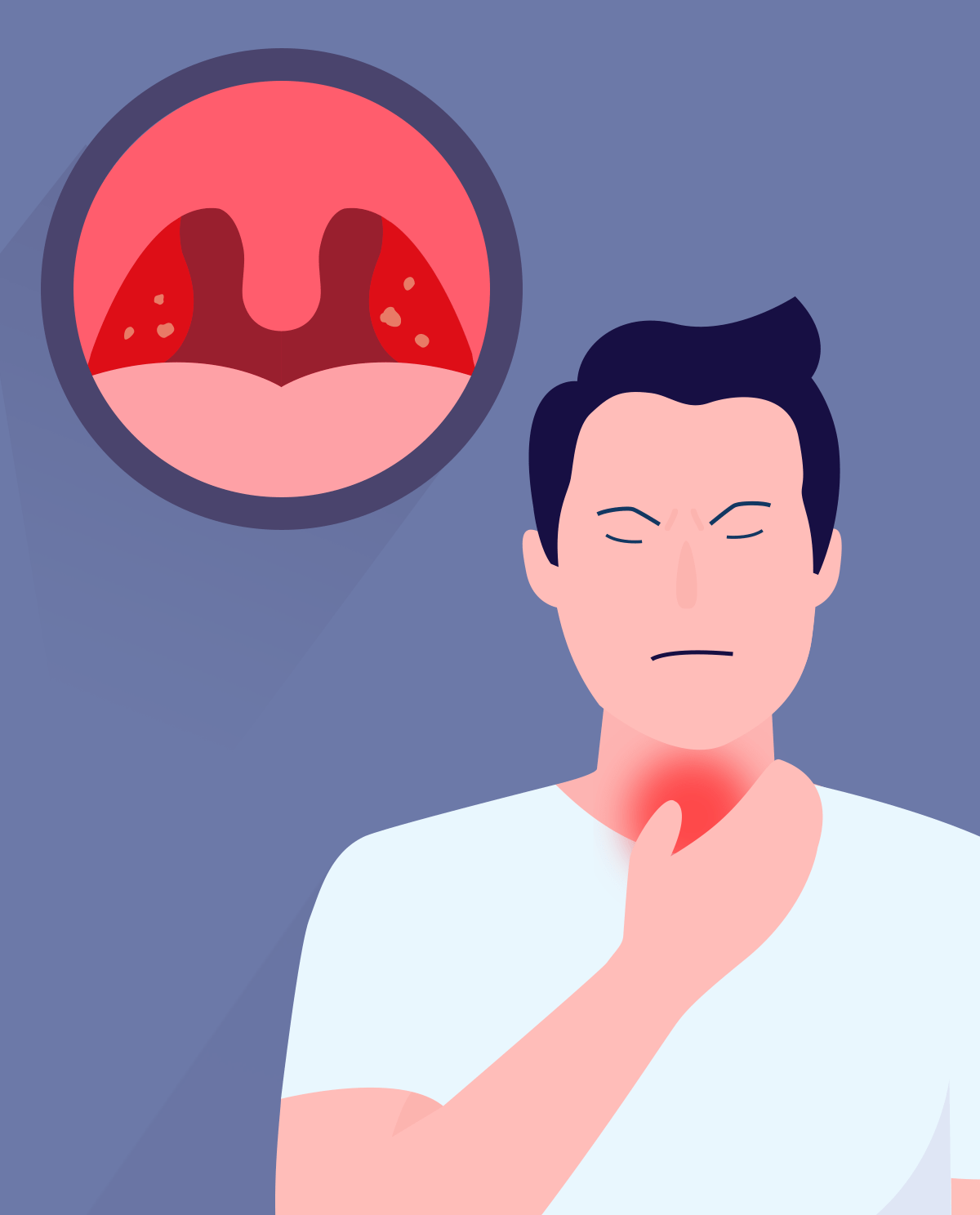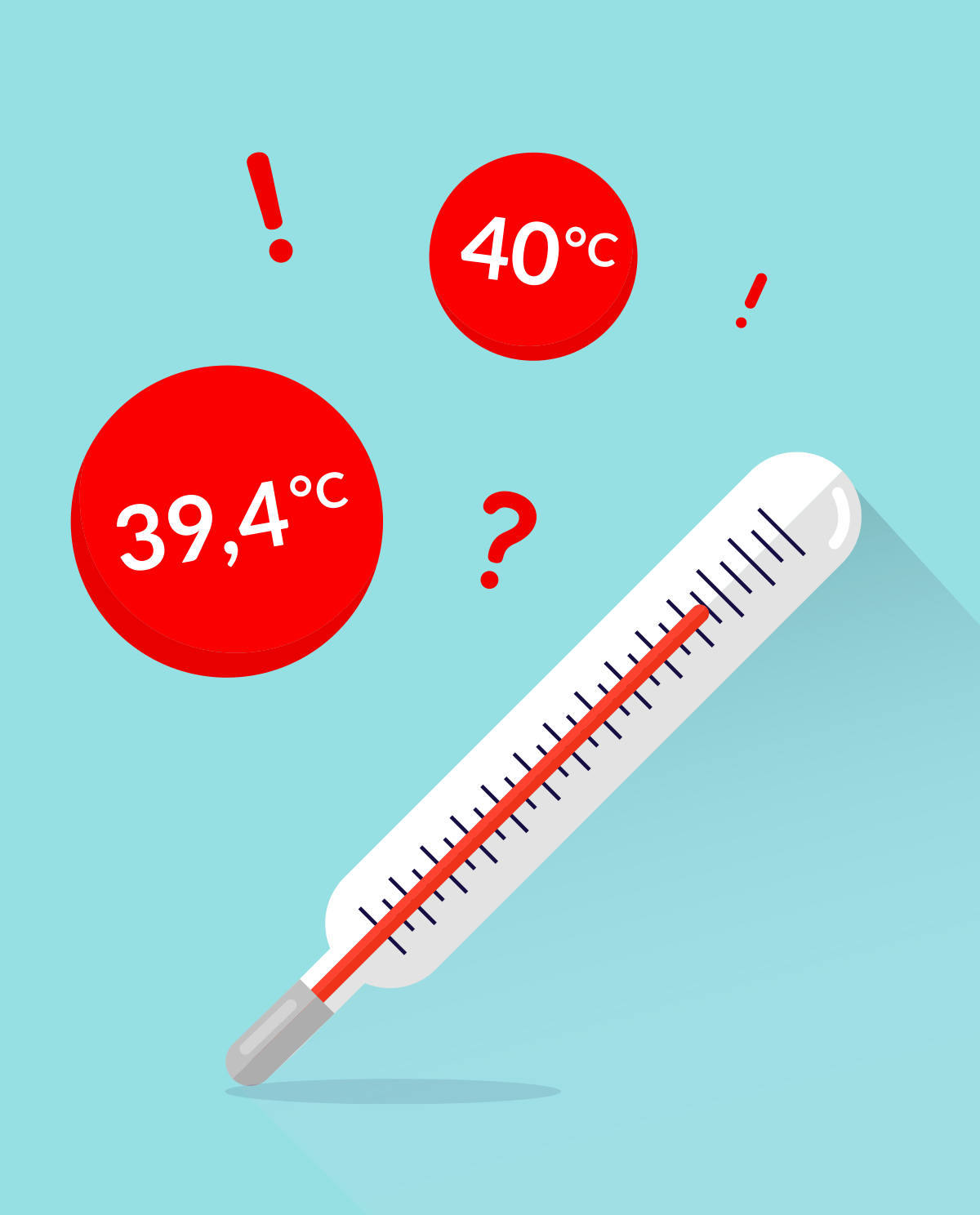A few words about flu
Influenza, or flu, is a serious acute illness caused by a respiratory infection with the virus. There are three types of influenza virus: A, B and C. Viruses A and B are the cause of severe illness and epidemics, while type C is a less dangerous form of the disease.
- Type A occurs in humans and animals such as: pigs, horses, seals, minks, whales and birds. Waterfowl are considered a virus reservoir. The Type A influenza virus is divided into subtypes depending on the type of two proteins on the surface of the molecule: haemagglutinin (H) and neuraminidase (N). Seasonal influenza is most often caused by viruses of the H1N1 and H3N2 subtypes (in some H1N2 seasons). Therefore, the seasonal influenza vaccine is produced from these three types of virus. Unfortunately, the type A virus is characterized by high variability, hence the need to change the composition of vaccines every year.
- Type B occurs only in humans and much less often causes seasonal flu.
- Type C occurs in humans and pigs. This virus causes only light infections, for example conjunctivitis, and does not cause epidemics.
How do we get infected?
The infection is caused by:
- droplets - through direct contact with a patient, who by coughing or sneezing sprays small droplets of airway secretions containing the influenza virus,
- contact with infected objects - influenza viruses can survive in the environment (on everyday objects, i.e. door handles, telephones, handrails, etc.) for several hours, then pass on to human hands and then be transferred to the eyes, mouth or nose where infection occurs.
- close contact, e.g. by touch - the source of the virus can be both people infected with flu, as well as sick or dead animals, such as pigs and domestic or wild birds.
- alimentary route - (part of the digestive system) as a result of eating raw or undercooked meat or raw birds' sick eggs (this is a very rare way of getting a flu virus).
Flu or a cold?
The flu and the common cold are two different diseases. The main difference here is the significant severity of symptoms and the rapid rate of their rise in the case of influenza, as well as the high risk of complications.
| Symptoms | Cold | Flu |
|---|---|---|
| Beginning | Gradually worsening symptoms | The disease begins abruptly |
| A sense of weakness | Small and short-lived - a few days | Significant - can last for 2-3 weeks |
| Fever | Subfebrile state, body temperature usually does not exceed 38 ° C | High, even up to 40 ° C, lasting for 3-4 days |
| Chills | Rarely | Often strong, especially before the onset of fever |
| Arthralgia (joint pain) | Slight | Very intense |
| Muscle aches | They do not occur or are not very severe | Very intense |
| Headaches | Rarely, not very strong | Intensive |
| Runny nose | Very often, a characteristic symptom | Rarely or does not occur |
| Cough | Scratching in the throat, not very severe, beginning to dry, then wet | Dry, suffocating, persistent; Often accompanied by chest pain and shortness of breath |
| Sore throat | Often, a characteristic symptom | Rarely or does not occur |
| Hoarseness | Often, a characteristic symptom | Rarely or does not occur |
| Conjunctivitis | Rarely | Often |
| Duration | 7 days, usually about 5 days | 10 days, but symptoms of weakness can occur up to 3 weeks |
| Treatment | Rest, symptomatic treatment, home remedies and herbal remedies | Medical advice may be required, especially if the symptoms are severe |
| Complications | Rarely; possible secondary bacterial infections | Multi-organ; most often pneumonia, bronchitis, myocarditis, respiratory failure |
How long will the patient be infected?
- From infection to the onset of influenza symptoms, 1-7 days (an average of 2 days).
- The duration of the disease, usually about 10 days, but the cough and feeling of weakness can occur up to 3 weeks.
- An adult patient may be a source of infection 1 day before and 3-5 days after the onset of influenza symptoms (sometimes up to 10 days).
- Small children can infect several days before and more than 10 days after the onset of symptoms.
- A patient is more likely to be infectiousness with a higher fever and this lasts up to 24 hours after the fever has subsided.
- Patients with severe immune deficiencies can excrete influenza virus for several weeks or months.
How can you treat the flu?
General recommendations:
- Stay at home.
- Avoid physical exercise, preferably rest in bed.
- Drink lots of liquids, such as non-carbonated mineral water, hot but not hot tea (avoid fizzy and ice-cold drinks).
- Take medication only if necessary to relieve symptoms. Never use antibiotics without a prescription!
- If you have a fever or headache, take paracetamol. It is safer than other painkillers. Use it temporarily in the event of symptoms, at a dose of 1-2 tabl. (500-1000 mg). The effect of the drug persists for 4-6 hours. Do not exceed the dose of 4g/day (8 tablets) or, if we use the drug for more than 2-3 days, the dose of 2.5 g (5 tablets). Overdose can cause liver damage. In addition, paracetamol is part of many complex medicines, so check their composition to avoid overdosing.
- If paracetamol does not help, you can take a non-steroidal anti-inflammatory (eg, ibuprofen, naproxen or aspirin) but cautiously in patients with peptic ulcer disease!
- Ibuprofen - usually one tablet, or 200 mg (also "forte" tablets containing 400 mg of the drug are available), then, if necessary, you can take another dose every 6 hours. The maximum daily dose is 1.2 g (6 tablets of 200 mg or 3 tablets of 400 mg).
- Naproxen - 1 tablet, i.e. 250-500 mg, then, if necessary, 1 tablet every 6-8 hours. The maximum daily dose is 1250 mg (5 tablets of 250 mg each).
- Aspirin (acetylsalicylic acid) - 1-2 tabl, ie 300-600 mg every 4 h (also "max" substances containing 500 mg of the drug are available). The maximum daily dose is 3 g (10 tablets of 300 mg). Attention! Aspirin should not be used in children <12 years of age due to the risk of Reye's syndrome.
- A dry cough can be combated with antitussives such as butamirate or levodropropizine. A spoonful of honey before bed is also soothing. If a bronchitis is difficult to expectorate in the bronchi, a guaifenesine-containing preparation can be used, but the data on its efficacy are contradictory. One should definitely avoid complex preparations containing both antitussive and expectorant (most often dextromethorphan + guaifenesine).
- People living with the patient should also wash their hands more often and avoid touching their nose, eyes and mouth with their hands.
Causal treatment (antiviral drugs):
- The optimal time to start treatment with antiviral drugs from the beginning of symptoms is from 48-72 hours.
- Flu drugs are only available on prescription in Poland. They are also received by seriously ill people who are in hospitals with a high risk of complications.
- Drugs effective in fighting the flu virus are:
- Neuraminidase inhibitors: oseltamivir (Tamiflu) and zanamivir (Relenza) stop the propagation of the virus. They are effective against the types of virus A and B.
- M2 inhibitors: amantadine and rimantadine block the ion channel (M2 protein) preventing viruses from infecting cells. They are sometimes effective against influenza A if given early, but have no efficacy against type B virus.
When should you talk to a doctor?
You should report to a doctor if:
- dyspnoea and/or wheezing attacks occur,
- fever >38°C,
- increased cough with expectoration of purulent secretion persisting for more than a few days,
- you have a strong and relentless headache, sinus (around the nose, forehead, jaw) or ear pain,
- you have any chest pain located in the heart area and/or the feeling of a rapid heartbeat.
How can you protect yourself against flu?
- The most effective method of preventing influenza is annual preventive vaccinations. Influenza viruses are very diverse and easily mutate to create new varieties. For this reason, the World Health Organization annually defines the lines of the virus that are expected to cause disease in the next flu season, which is why they should be repeated every year.
- In periods of increased incidence (in the Polish climatic zone it is the autumn and winter period), avoid crowded places, and when staying at school, work and in public places (i.e. on a tram, in a library or shop), do not touch your mouth with your hands.
- It is recommended that you avoid close contact with sick people.
- It is necessary to wash your hands often and with soap (15-30 seconds). Alcohol-based disinfectants can also be used.
- Moderate intensity should be practiced regularly. If you have flu, resting in bed is recommended.
- In the autumn and winter period it is recommended that you wear warm clothes.
- Interna Szczeklika 2018 Handbook of Internal Diseases Authors: Piotr Gajewski, Andrzej Szczeklik Publisher: Medycyna Praktyczna
- Lidia Bernadeta Brydak: Influenza and its prevention. Poznań: Termedia, 2004
- http://www.mp.pl
- https://www.mp.pl/pacjent/
- https://www.mp.pl/pacjent/grypa/grypasezonowa/61825,grypa-i-przeziebienie
- https://www.mp.pl/pacjent/grypa/grypasezonowa/48211,grypa-jak-sie-zarazamy
- https://www.mp.pl/pacjent/grypa/
- http://www.influenzareport.com
- https://www.medicinenet.com/influenza/article.htm








